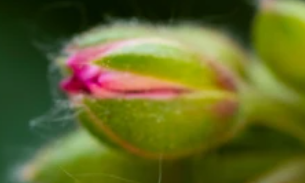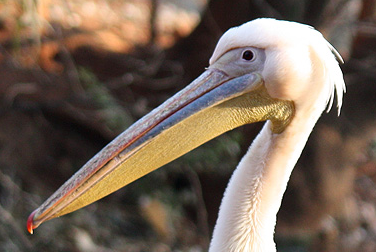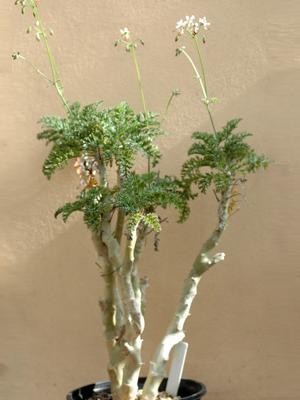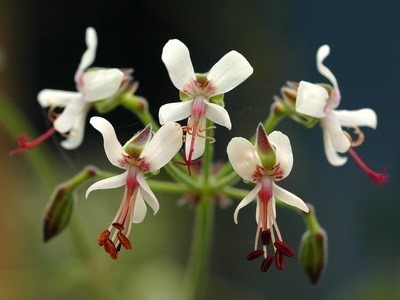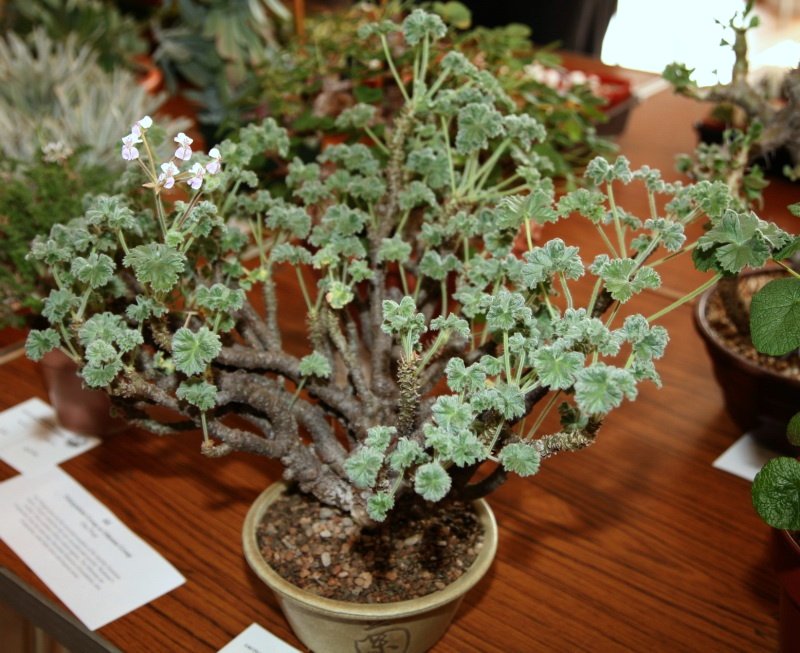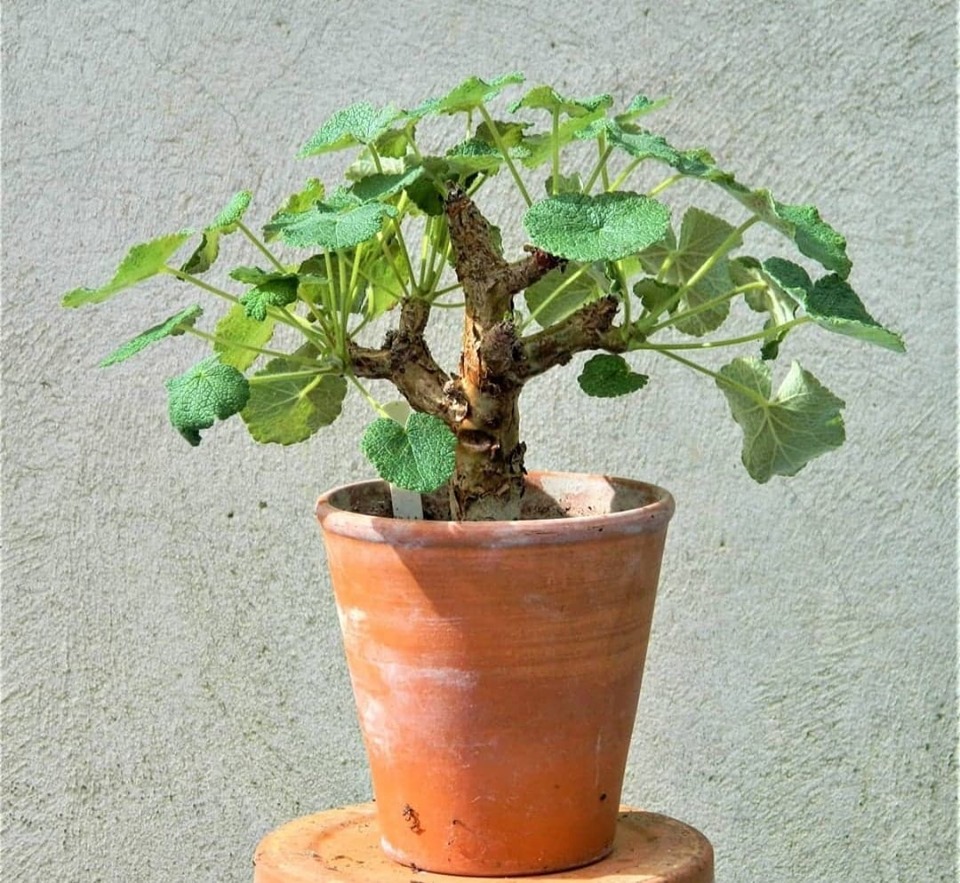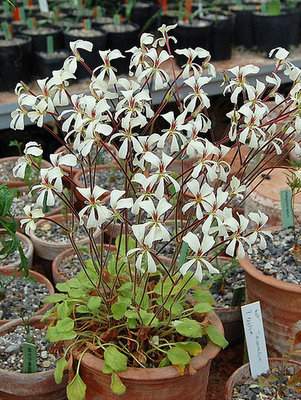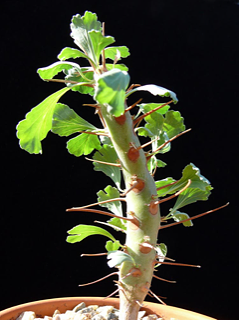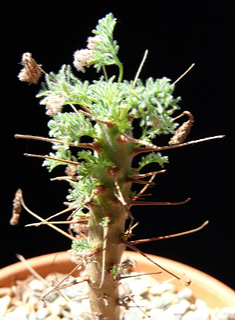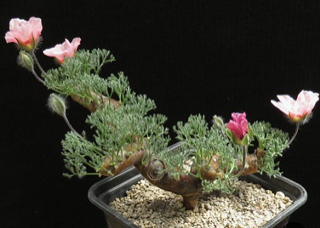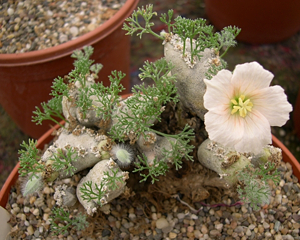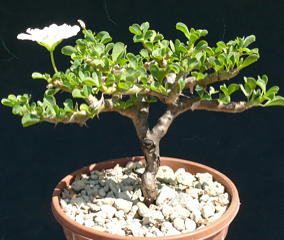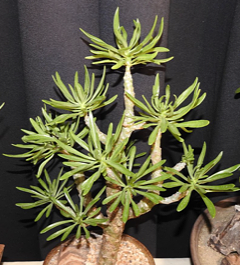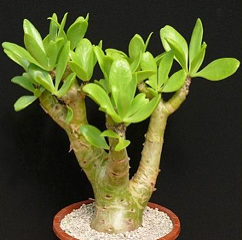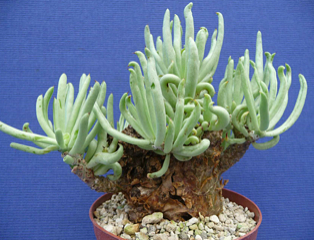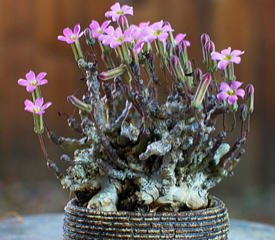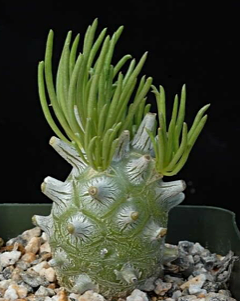Submitted by: Jim Tanner
Pelargonium and Sarcocaulon are two succulent genera of the Geraniaceae family. Sarcocaulon is native to South Africa and Namibia, and Pelargonium is centered there, but with outlier species appear as far away as Kenya and Yemen. Most of the succulent species come from South Africa or Namibia.
Pelargoniums are mostly winter growing succulents. They are dormant in the summer, and at this time some look like dead sticks. Most species are very easy to grow, if attention is paid to providing an environment very similar to their South African home. Some species, such as P. echinatum and P. triste are tolerant enough to be naturalized in the ground in Southern California when given good drainage and protected from summer watering. Many species will not go dormant if watered all summer, but the plant health and appearance both suffer.
Sarcocaulon is a small genus of about 14 species. Growing conditions for Sarcocaulon are identical to those for Pelargonium, however most require a drier summer environment for best growth.
The potting mix for Pelargoniums and Sarcocaulon should be well drained, with only small amounts of organic matter. Fertilizer should be applied sparingly, and only during good (bright and warm) growing weather. A potting mix recommended by Michael Vassar is 50% pumice, 35% washed builders sand and 15% leaf mold based planter mix. Plants growing under these conditions will stay compact, have thick leaves, and a healthy appearance. A well grown Pelargonium will have leaves that appear to float near thick, rugged stems. If given too much water and fertilizer, they will grow leggy, and the leaves will become soft, large and droop. Plants grown hard will be healthier, and better able to survive hot summers undamaged. All Pelargoniums need pruning to maintain size and shape. Pinching new growth will make the plants bushy, and develop good trunk structure.
Many are self fertile, and seed is easily collected after flowering. Most are promiscuous, and garden hybrids are easily set if more than one species is in flower at a time. Seed collected in the spring and planted in late September to November germinates quickly, and will have an entire winter to grow before going dormant during the summer.
Tom Glavich
[Ed: We know that the difference between a Geranium and a Pelargonium is that the former has five equally spaced petals whereas the latter has two at the top and three at the bottom. In my opinion the Pelargonium is named after a pelican because the petals make the buds bulge at the bottom resembling the beak of a pelican. Continuing the analogy it seems likely that the Geranium was originally pronounced with a soft G and was named after a Heron, having no bulge at the bottom of the bud. Interestingly Geranium maculatum is commonly known as cranesbill.]
Pelargonium bud
Pelican
Tylecodon is a relatively new genus in the Crassulaceae family first published in 1978. In books published before this date, most plants that we know today as Tylecodon will appear as Cotyledon. In habitat, Tylecodon are generally deciduous, losing their leaves in summer while Cotyledon tend to be evergreen.
Tom Glavich
LATIN LOOKUP – Loquerisne Latine (Do you speak Latin)?
The meanings of latin plant names on this page – from http://davesgarden.com/guides/botanary/
- alternans [al-ter-NANZ]
Alternating. - carnosum [kar-NO-sum]
Somewhat fleshy. - cotyledonis [ko-ty-LEE-don-is]
Of or from the cotyledon (joint socket, cavity). - crassicaule [krass-ih-KAW-lee]
Thick-stemmed. - grandiflorus [gran-dih-FLOR-us]
With large flowers. - herrei [HER-ray-eye]
Named for Dr. Hans Herre, 20th century botanist and expert on South African succulents. - multifidum [mul-TIF-id-um]
Many divided. - paniculatus [pan-ick-yoo-LAY-tus, pan-ick-yoo-LAH-tus]
Referring to the flower clusters (panicles). - pearsonii [peer-SON-ee-eye]
Named for William Henry Pearson, 19th century hepaticologist and yarn agent. - Pelargonium [pe-lar-GO-nee-um]
From the Greek for Stork referring to the seed heads. - Sarcocaulon [sar-koh-KAW-lon]
From the Greek sarkos (flesh) and caule (stem). - Tylecodon [ty-lee-KOD-on]
An anagram of Cotyledon (a closely-related genus). - wallichii [wall-IK-ee-eye]
Named for Dr. Nathaniel Wallich, early 19th century Danish plant hunter, botanist and physician.
